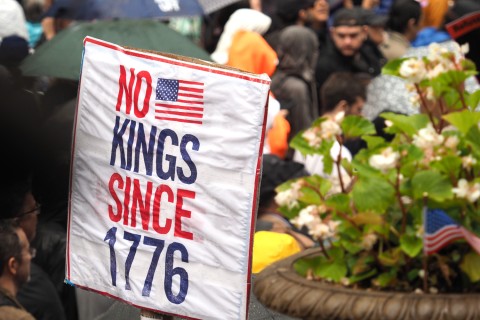Safety is for bodies
“Make America Safe Again,” said the signs and speakers on the first night of the Republican National Convention. The desire to feel and be safe crosses political boundaries; it informs a litany of human actions. Yet the very concept seems unexamined. What makes for safety? Is it the same as feeling safe? Is it the same as comfort?
Whatever else safety is, it is an experience located primarily in the body.
I rode my bicycle across the United States. Two skinny tires for thousands of miles through long stretches of Montana and North Dakota. This was before smart phones were everywhere. Seven years later and what feels like a lifetime older, it seems like such a dangerous thing, a woman on a bike through unknown U.S. roads.
And I’m a white woman. I have a pretty smile and a look that people find familiar. I don’t believe my physical appearance has ever led to me being perceived as a threat. I wear my hair butchy short, though my face is quite feminine. I do look gay, and am.
The other day, I rode an unfamiliar route. Along the poorly maintained lake roads were Trump signs, hefty pickup trucks, variously maintained properties, and a sign right out of a 1950s movie declaring that I had entered a private lake beach club area. I arrived at a grassy triangle, an old New England country cemetery where I had to make a decision which way to go.
Consulting my smart phone—which I do now carry and which I think has a direct correlation to me worrying more—I saw that to the right, on the road that would loop me back home, there was a pistol permit business. Already the gravestones had frightened me, and the long country stretches of road I cannot declare as my own. I don’t think those guns are being purchased and permitted to protect me, a gay woman.
Their owners may find comfort in my whiteness, however. In my woman body, the violence I most fear on a long stretch of road is someone pulling my body too close to theirs and violating it. Blackness is perceived as such a threat to safety that we don’t let black bodies get close. The proximity of a black body is itself perceived as a threat to our feeling of safety.
There are endless possibilities of accidents that would threaten the perception or fact of being safe. Our being human is not at its heart a safe kind of being. This fragile reality is all the more reason we need to cultivate communities that support the safety we can control: the practices of how we relate to bodies to afford each person movement, breath, nourishment, and connection.
As I read it, the Black Lives Matter movement is in part a collective expression of people’s desire to feel and be safe in their bodies. The movement is using the body itself to make this claim. Occupying more body space, claiming the body’s desire for and skill at movement, breath, nourishment, and connection—this is a potent and disruptive act, especially when done by people whose bodies have been labeled as less than or as threatening to the status quo.
In his speech at the RNC, Milwaukee County sheriff David Clarke described the BLM movement as a threat to safety: “Safety is a shared endeavor. It starts will a willing acceptance of people to play by society’s rules,” he began. “What we witnessed in Ferguson and Baltimore and Baton Rouge was the collapse of the social order. So many of the actions of the Occupy movement and Black Lives Matter transcend peaceful protest and violate the code of conduct we rely on. I call it anarchy.”
Like Clark and the RNC, the BLM movement wants safety. The difference is that the BLM movement wants a safety that has not yet been while the RNC wants a nostalgic safety, the shaky ground that allows for branding black, brown, woman, immigrant, gay bodies as unsafe, as outside the protection of society’s code.
“Make American Safe Again” captures a desire to return to a day when only certain bodies were afforded the respect of law, geography, and spirituality (who is the god you ask to bless America?) that is the ground of safety. The slogan offers a seemingly benign nostalgia (who wouldn’t want safe?) for the ordered, familiar categorical ease of a racist, sexist, and homophobic past. The safety it remembers was always only for some.
One reaction to the fragile reality of being human is defense, stiffness. Another is to occupy more body space, to pay attention to the body’s desire for and skill at movement, breath, nourishment, and connection. Claiming more of the body’s wisdom is a potent and disruptive act. It is also at the heart of becoming more fully alive, more fully human.





